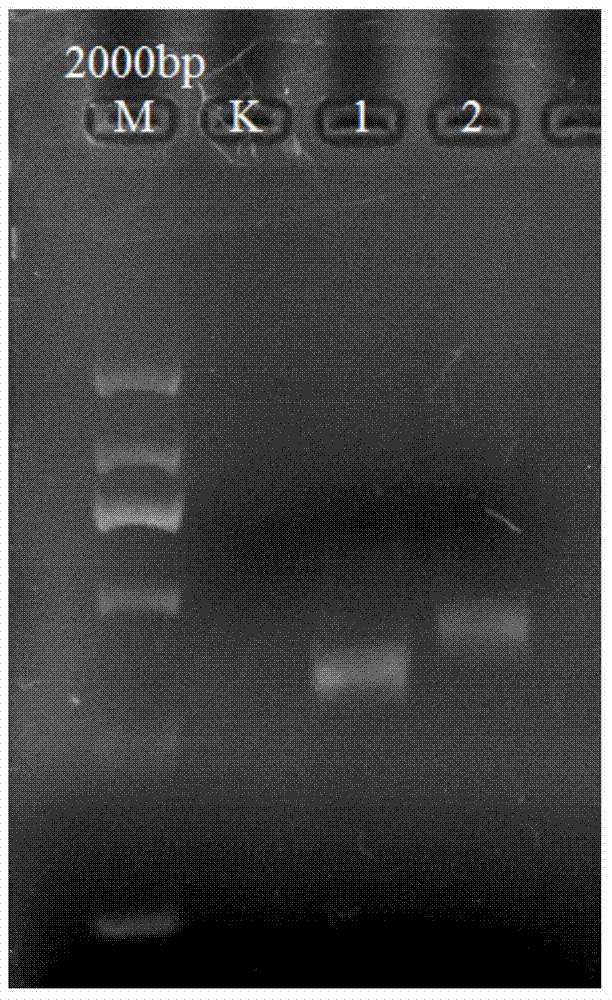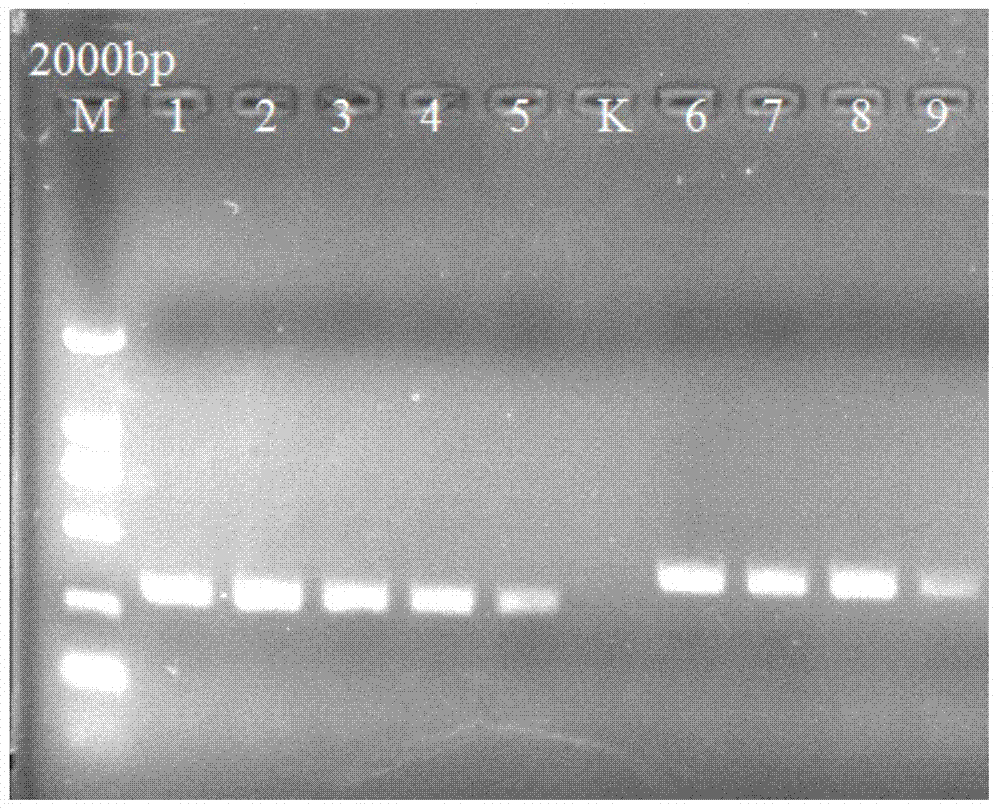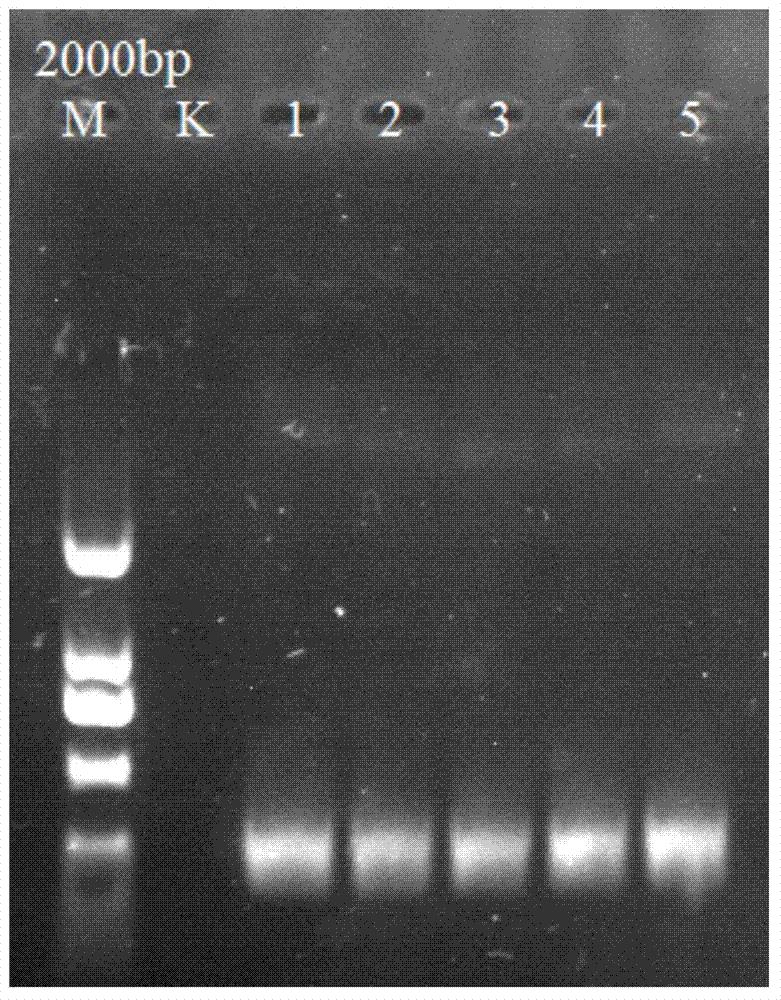Method for detecting bupleurum chinense and bupleurum scorzonerifolium by utilizing specific primer PCR (polymerase chain reaction)
A narrow-leaf Bupleurum and specificity technology, applied in the field of molecular biology detection of Bupleurum and narrow-leaved Bupleurum, can solve the problems of high operator requirements, high cost, cumbersome probe preparation, etc., and achieve high sensitivity and easy operation Simple and specific effect
- Summary
- Abstract
- Description
- Claims
- Application Information
AI Technical Summary
Problems solved by technology
Method used
Image
Examples
Embodiment 1
[0028] Embodiment 1 is used for detecting the synthesis of the PCR primer of Radix Bupleurum and Bupleurum angustifolia
[0029] A total of 12 ITS sequences of Bupleurum and Bupleurum angustifolia were obtained from GenBank, and the above sequences were compared with the biological software DNAMAN version4.0 to find out all the variation sites of Bupleurum and Bupleurum angustifolia that are different from other species . According to the position of the mutation site, primers of about 20 bases were designed respectively on the upstream and downstream of the ITS sequence; the designed primers were analyzed using the biological software Primer5. Primer F1: 5'-ATGCCTCCGCCCCGTTTGG-3' and downstream primer R1: 5'-TGCGTTTTCC GATCTCCGGT-3'; suitable primer pair for Bupleurum angustifolia, upstream primer F2: 5'-TGTCGTCGGCCTCGGCCTG-3' and downstream primer R2: 5 '-ACGACGAGGCACGGGAGGT-3'.
[0030] Primer synthesis was completed by Sangon Bioengineering (Shanghai) Co., Ltd.
Embodiment 2
[0031] Example 2 Utilize PCR primers to detect the specificity and sensitivity analysis of Radix Bupleuri
[0032] 1.1 Sample source
[0033] The samples of medicinal materials used in this example are: Bupleurum radix, collected from Hunyuan, Shanxi.
[0034] 1.2 DNA extraction
[0035] Take about 60 mg of the above samples, grind them into powder with liquid nitrogen, and use the kit method to extract DNA. The kit was purchased from Beijing Aidelai Biotechnology Co., Ltd., model: CTAB Plant Genomic DNA Rapid Extraction Kit (Cat. No.: DN14), 50 times.
[0036] 1.3 Serial dilution of sample DNA
[0037] The DNA concentration of the extracted Bupleuri herb was detected to be 181.1 ng / μl. The DNA samples were serially diluted, and the diluted concentrations were 1.811, 0.905, 0.603, 0.452, 0.362 ng / μl, and stored at -20°C for later use.
[0038] 1.4 PCR reaction
[0039] Reaction system (25μl):
[0040]
[0041] The PCR reaction conditions were: 93°C for 5 minutes; 35 cy...
Embodiment 3
[0045] Example 3 Utilize PCR primers to detect the specificity and sensitivity analysis of Bupleurum angustifolia
[0046] 1.1 Sample source
[0047] The medicinal samples used in this example are: Bupleurum angustifolia, collected from Lindian, Heilongjiang.
[0048] 1.2 DNA extraction
[0049] 1.2 with embodiment 2.
[0050] 1.3 Serial dilution of sample DNA
[0051] The DNA concentration of the above-mentioned extracted Bupleurum angustifolia medicinal material was detected to be 99.3 ng / μl. The DNA samples were serially diluted, and the diluted concentrations were 0.993, 0.496, 0.331, 0.248 ng / μl, and stored at -20°C for future use.
[0052] 1.4 PCR reaction
[0053] Except that the primers (F2-R2) used are different, the rest are the same as 1.4 in Example 2.
[0054] 1.5 Results
[0055] Detection method is the same as 1.5 of embodiment 2.
[0056] A band of about 407bp appeared, proving that the tested sample was Bupleurum angustifolia or contained Bupleurum ang...
PUM
| Property | Measurement | Unit |
|---|---|---|
| Sensitivity | aaaaa | aaaaa |
Abstract
Description
Claims
Application Information
 Login to View More
Login to View More - R&D
- Intellectual Property
- Life Sciences
- Materials
- Tech Scout
- Unparalleled Data Quality
- Higher Quality Content
- 60% Fewer Hallucinations
Browse by: Latest US Patents, China's latest patents, Technical Efficacy Thesaurus, Application Domain, Technology Topic, Popular Technical Reports.
© 2025 PatSnap. All rights reserved.Legal|Privacy policy|Modern Slavery Act Transparency Statement|Sitemap|About US| Contact US: help@patsnap.com



